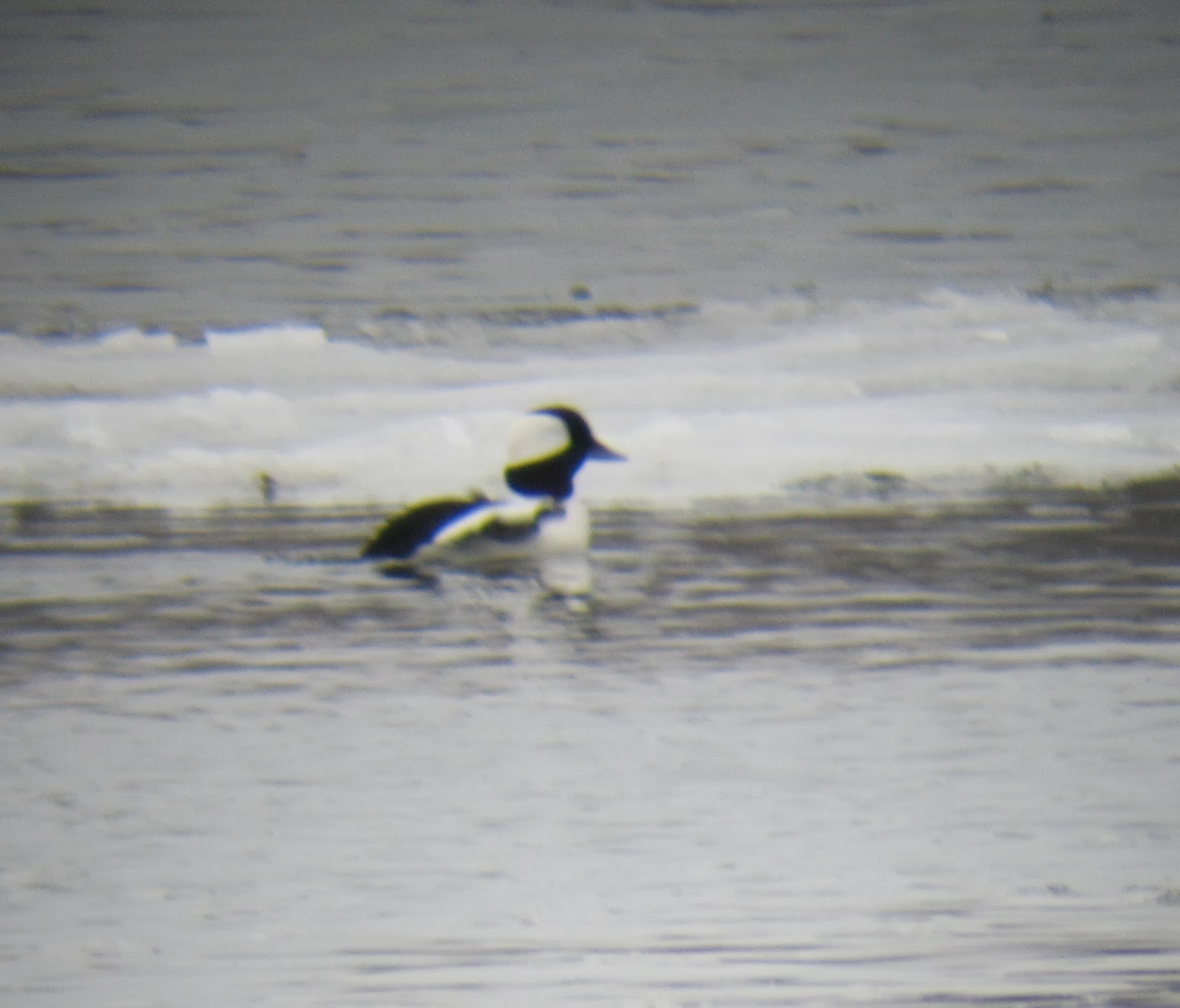Spring is Sprung! The birds are singing! The flowers are blooming and the butterflies are fluttering!
I visited Hempstead Lake State Park today to locate signs of the arrival of spring. The first sighting came as we were driving there: a large, dark bird with crooks in the wings flying over us. 'Twas a first-of-season
OSPREY! It should be pointed out that Ospreys are some of my favorite birds, thanks to their gray-and-white plumage, huge (six foot) wingspan, and stunning headfirst plunges into the water to grab some fish. And, every year when it gets chilly out and the snow is on the ground, all the Ospreys around pack up and head on down to Cuba. Not until spring do they return. Therefore, seeing an Osprey is really a sign of spring.
Then, I visited the South Pond. A raft of
Ruddy Ducks swam around, and a large quantity of
Hooded Mergansers did the same behind them. Numerous
Ring-necked Duck mixed with the Ruddies.
Then, we headed toward the main lake, walking along the trail and making a few stops along the way. A great number of
White-breasted Nuthatches hopped up and down the trees, making their nasal "hank, hank, hank" calls.
I observed the South Pond again, from the other side. Here, another
Osprey circled around and hovered quite close, allowing for great photos.
 |
| Osprey Hovering |
 |
| More Osprey |
Then, we accidentally bumped into McDonald Pond, a tiny manmade body of water mainly for fishing. However, there was a pair of
American Wigeon there, which was nice.
 |
| American Wigeon Pair |
 |
| American Wigeon Posing for the Camera |
A
Cooper's Hawk soared around way up high in the sky, totally scaring the wits out of a series of
European Starlings. It was good to see a Cooper's Hawk. I haven't seen one in a long time.
Then, we made a discovery: a pair of
Red-bellied Woodpeckers attending to their nest hole in a tree! I'll go back and watch them with their young later on in the year.
 |
| Red-bellied Woodpecker Nest Hole |
I jumped a guardrail (don't tell
anybody) and then was looking out over the Hempstead Lake.
Ring-billed and
Herring Gulls were out on the lake, with four
Greater Black-backed Gulls mixed in. Another
Osprey flew to my right, carrying nesting material. A
Red-tailed Hawk flew across the lake, and landed in a tree.
And then, there was a little loon out on the water. After much deliberation, I determined it was a RED-THROATED LOON, a life bird! I continued to see him throughout the day, and he much overshadowed the Tufted Titmouse in the trees. A Murder of American Crows sat in a tree.
 |
| A Murder of Crows |
We headed home, but pulled off again at the South Pond. There was a most likely
Common Loon, a
Bufflehead, and yet another
Osprey. Numerous swallows flew around, some of which were
Barn Swallows and the rest of which may or may not have been Tree Swallows, but most likely were not.
The real find there was not a bird, though. It was a BEAVER, swimming low in the water and looking like a beaver generally should.
It was a fantastic trip!
Totally unrelated to Hempstead Lake or the arrival of Spring, but I found out today that most of the pageviews on this blog come from the New York State Young Birder's Club website, where this site is listed as a young birder blog. Thanks so much for putting it there! Please check out their website, and if you are a birder who lives in NY between the ages of 10 and 19, consider joining!
 |
| Red-throated Loon Flaps Wings! |

















